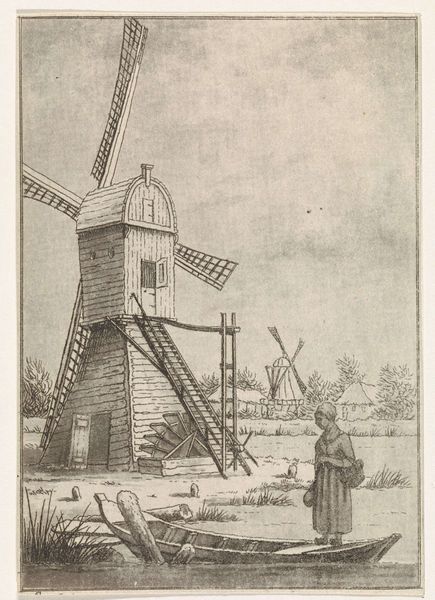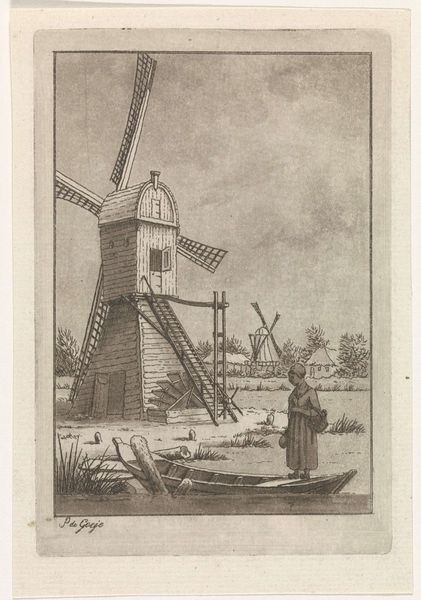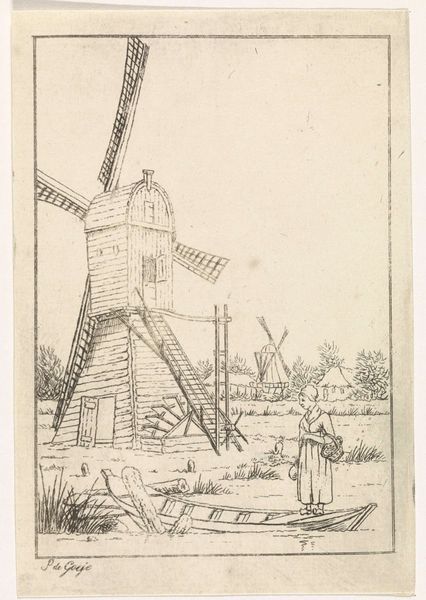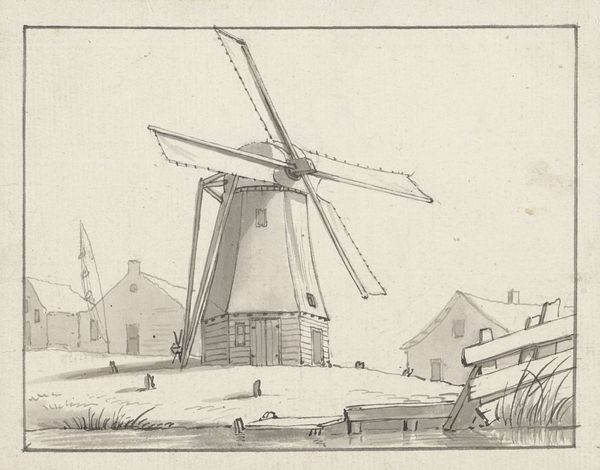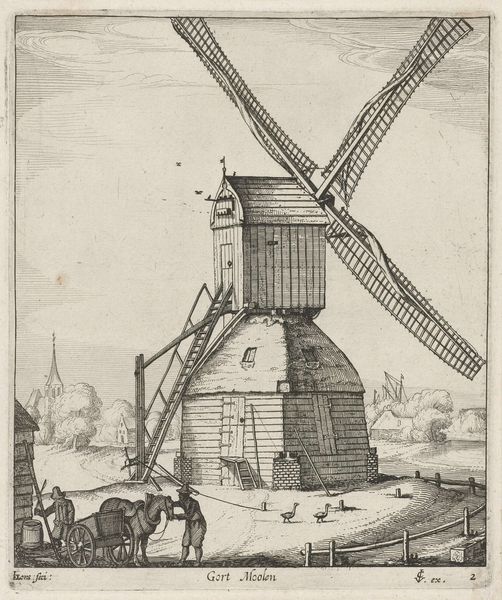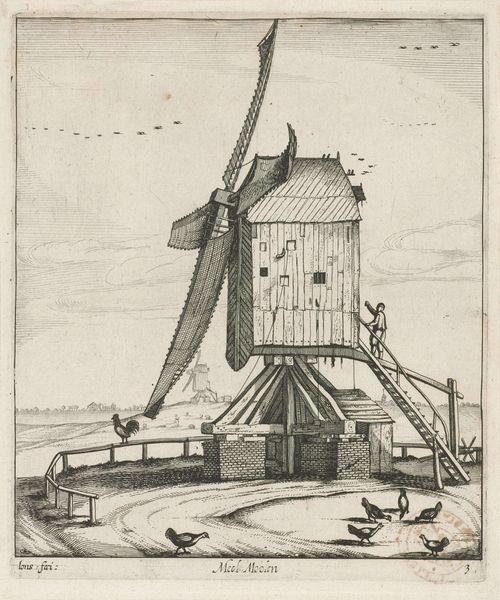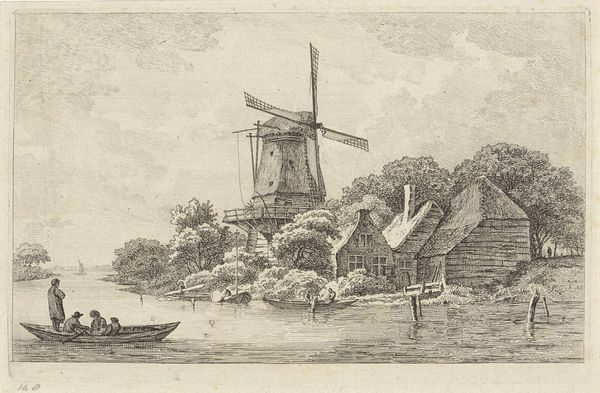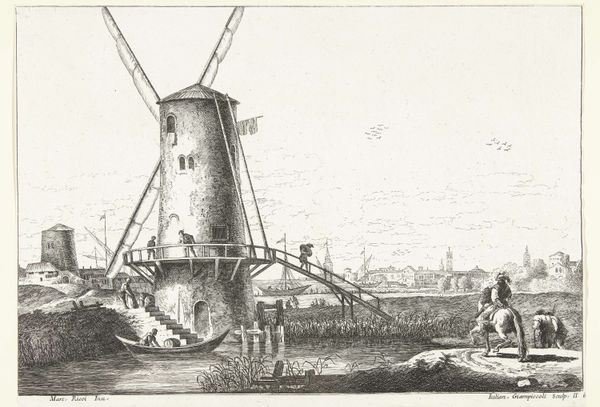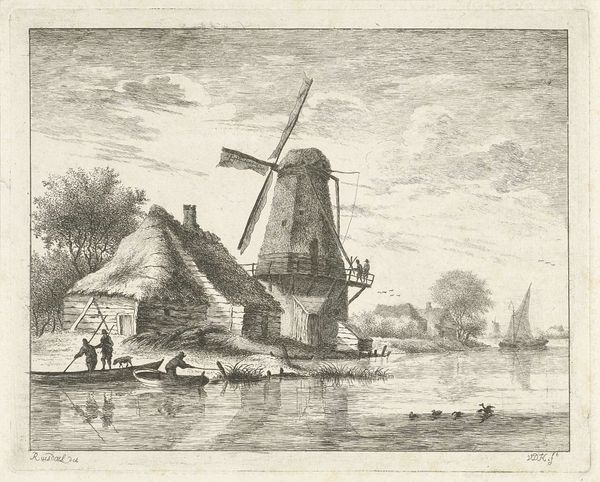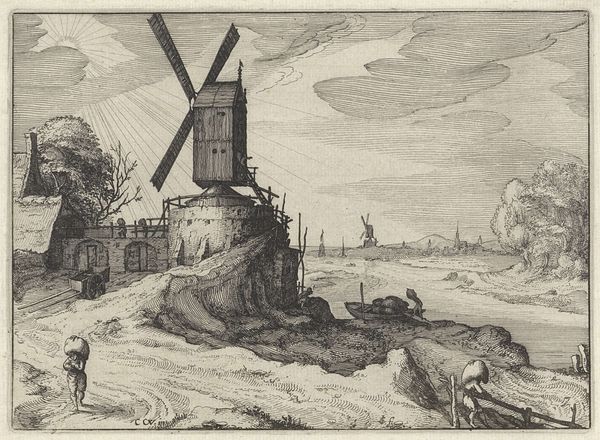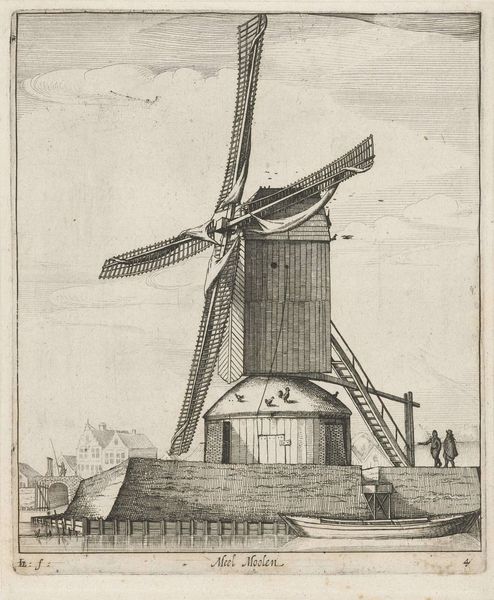
drawing, pencil, graphite
#
drawing
#
landscape
#
figuration
#
pencil
#
graphite
#
genre-painting
#
realism
Dimensions: height 114 mm, width 79 mm
Copyright: Rijks Museum: Open Domain
Editor: This pencil and graphite drawing, titled "Vrouw staand op een bootje voor een windmolen," which roughly translates to "Woman standing on a boat in front of a windmill", created by Pieter de Goeje sometime between 1789 and 1859, has a certain tranquil charm. There's a simplicity in the depiction of rural life. How do you interpret this work within its historical context? Curator: It’s interesting to consider how these images functioned. The detailed rendering of the windmill, its mechanics almost glorified, suggests a society deeply reliant on, and perhaps even idealizing, industrial progress despite it taking place in a rural and working class environment. Who, do you think, was the intended audience for images like these? Was it purely documentary, or do you see elements of social commentary or even, perhaps, gentle critique? Editor: It’s possible the artist intended to portray both the serenity of the countryside and the encroachment of industry, which creates a complex commentary on societal changes, however mild. But what societal narratives are implicit in this work, particularly in its portrayal of women and their roles? Curator: Precisely! Notice the woman: positioned almost at the same level as the base of the windmill. Her presence challenges the rigid structures dominating the background by depicting her as just as imposing. Perhaps it subtly elevates her importance amidst the landscape. We can consider how depictions of women, industry, and landscape all operate within very specific art markets, each vying for viewership in urban centers eager to connect (or disconnect) with an idealized, imagined countryside. Editor: That’s a great point; viewing this not just as a slice of life, but as a piece participating in a larger social and economic dialogue changes my whole understanding. Thanks! Curator: Indeed! Looking at the artwork through the lens of these discussions broadens our understanding, connecting the artist, their world, and ultimately, ourselves.
Comments
No comments
Be the first to comment and join the conversation on the ultimate creative platform.
